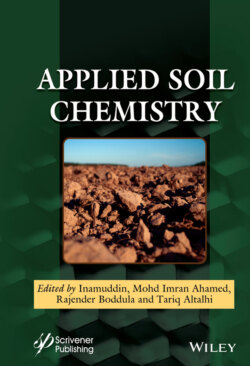Читать книгу Applied Soil Chemistry - Группа авторов - Страница 54
2.3.2.6 Influence of Time on the Rate of Chemical Weathering
ОглавлениеAccording Jackson et al., in the year 1948 [37], it was reported that for a particular particle size range and mineral species, the stages of weathering of the colloid weathering are the result of time duration of weathering and intensity function multiplication. Thorp et al., in the year 1944 [108], reported that soils present in some of the mountain displayed considerable development of soil and weathering after a particular duration of time. Retzer et al., in the year 1949 [63], reported great significance of the age of the mineral weathering and formation of dense, unique subsoils which are oftenly highly thick in case of Rocky Mountains of Central Colorado. The time of exposure or age exhibits crucial part for determining the type of mineral existing at a particular time in tropical soils. Mohr et al., in the year 1944 [96], reported five stages of weathering for the development of tropical soils. The stages include the following:
Beginning stage (unweathered virgin material)
Juvenile stage (point where there is beginning of weathering)
Virile stage (in this stage, the weathering is in highly advanced stage where the percentage of unweathered material is negligible)
Senile stage (at this point, there is completion of unweathered material weathering)
Final or end stage (at this point, development has reached to completion and the soil has been weathered.)
The above proposal displays that the weathering of mineral which contributes in formation of soil remains in equilibrium (dynamic) with the factors prevailing in the environment. According to the above proposal, at the final stage, there is the establishment of static equilibrium.
